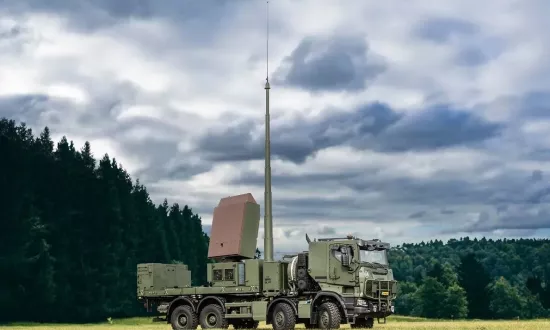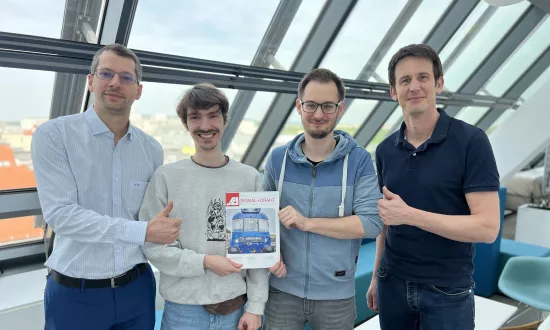Aerial Dual: The rise of the digital twin to train combat air pilots of the future
Darryn (Daz) Rawlins, Managing Director, Thales Training and Simulation, UK writes about the future of combat pilot training and how it is ready for change. He explores how digital-twin technology could enhance every aspect of pilot training for the next generation of warfighters.
These are exciting times for industrial manufacturing. Over the last 50 years, the sector has transformed itself through automation, computers and electronics. But this third industrial revolution, as it’s known, was always just a stepping stone to the fourth – aka Industry 4.0.
Industry 4.0 is the collective term for the large-scale digital transformation of manufacturing processes through smart technologies, such as data analytics, smart sensors, artificial intelligence, machine learning, and the Internet of Things (IoT). And it’s gathering pace.
The numbers vary, but McKinsey reckon Industry 4.0 has the potential to create an estimated £2.9 trillion of value for manufacturers and suppliers in 2025. And one area that’s drawing a lot of attention – and which I find fascinating – is the concept of the digital twin: a near real-time digital replica of a physical object or process. Its aim? To optimise business performance.
Welcome to the digital doppelganger
So for example, if I’m developing a new Aston Martin (my dream marque) I also create a digital twin of the entire car – engine, mechanics, electrics, software, and all its physical attributes and behaviour. This lets me simulate and validate each step of its development virtually, and identify any issues or potential failures before manufacturing real parts. Naturally, this digitisation of the process ¬– from design and prototyping, to simulation and production – can save huge amounts of time, money and materials.
Which is why aerospace and defence companies have begun using digital twins for all sorts of things. To cut unplanned downtime for engines and other systems, to carry out proactive and predictive maintenance to extend operational lifecycles / reduce costs, and to accurately predict how much life is left in an asset. Theoretically, digital twins can be used for anything – from manufacturing aircraft to their testing and evaluation, acceptance and certification.
But why stop there?
Why not create a digital twin of a person? Of a pilot? Of a combat pilot? So you could test the competency of a fighter pilot and fine-tune their innate skills, by beaming back the pilot’s physical performance to the twin, while they were flying a real or simulated mission. This could provide a powerful debriefing tool to identify areas for improvement, which could create an edge over adversaries, both in operational tactics and in the way a pilot flew their subsequent missions.
The digital twin concept is especially relevant as we move towards the sixth generation of fighter planes like the RAF’s Tempest currently in development, and its European counterpart, SCAF (Système de combat aérien future). Both these fighters are due to be unleashed into service between 2030 and 2035. And both will require a fit-for-purpose training system to prepare pilots for the sixth-gen capabilities these aircraft are expected to possess.
Two’s company
To this end, we’ve teamed up with AERALIS, a UK start-up that’s developing a next-generation combat-training aircraft to feed into the next generation of fighter. Part of our role will be to create a digital twin of AERALIS’ physical aircraft to help us develop the right training system for the aircraft. AERALIS’ “One Aircraft System. Many Missions” approach means their family of aircraft are built on a modular, common architecture, which can be individually optimised for a range of roles and mission types. This means pilots who previously had to learn all their checks in multiple cockpits, only have to do it once.
So instead of a training pipeline that goes from Prefect to Texan to Hawk to Typhoon or F35, you have one modular cockpit and then the F35. And ultimately, the only difference between training systems is an app that allows you to unlock different capabilities and performance profiles for each aircraft (a bit like a Tesla).
On the edge of human capability
And talking of Tesla, Elon Musk recently commented that he thought the age of the fighter pilot was coming to an end, and that the human was now the limiting factor in the cockpit, not the advantage. Our industry has written about this before, and it’s not surprising when you think of the advances in unmanned systems in recent years. So it makes sense to develop a manned and unmanned (or optionally manned) version of your next-gen fighter – as is the case with Tempest.
Obviously, we're not at the stage where we can take the human out of the loop entirely – so if we accept the human pilot might be the limiting factor, it’s imperative the training framework ensures they're not. The question is how do you design the pilot in digital terms and develop and train the model warfighter for next-gen aerial warfare? Especially when, unlike with autonomous vehicles, you’re having to work in three dimensions rather than two – while performing offensive and defensive manoeuvres at the same time. At this level of complexity, you can’t rely on AI to take all the decisions a human pilot needs to make. It’s close, but we’re not there just yet.
Joined at the hip
In the meantime, the challenge is to create a digital twin that accurately represents the ideal warfighter. A twin that a student can work towards, and which they can try to emulate and match in terms of flying and combat performance.
Ultimately though, it’s about designing a training system that can adapt to the inevitable transition of control from the pilot to an airborne system driven by AI. Right now, this seems particularly abstract, as we’re still relying on the comfort of the institutionalised norm: only highly trained human pilots can fly fighter aircraft.


